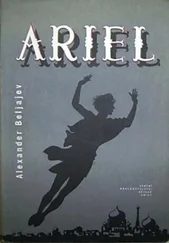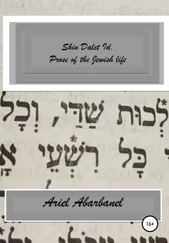Ariel Toaff - Blood Passover
Здесь есть возможность читать онлайн «Ariel Toaff - Blood Passover» весь текст электронной книги совершенно бесплатно (целиком полную версию без сокращений). В некоторых случаях можно слушать аудио, скачать через торрент в формате fb2 и присутствует краткое содержание. Жанр: Религиоведение, на английском языке. Описание произведения, (предисловие) а так же отзывы посетителей доступны на портале библиотеки ЛибКат.
- Название:Blood Passover
- Автор:
- Жанр:
- Год:неизвестен
- ISBN:нет данных
- Рейтинг книги:3 / 5. Голосов: 1
-
Избранное:Добавить в избранное
- Отзывы:
-
Ваша оценка:
- 60
- 1
- 2
- 3
- 4
- 5
Blood Passover: краткое содержание, описание и аннотация
Предлагаем к чтению аннотацию, описание, краткое содержание или предисловие (зависит от того, что написал сам автор книги «Blood Passover»). Если вы не нашли необходимую информацию о книге — напишите в комментариях, мы постараемся отыскать её.
Blood Passover — читать онлайн бесплатно полную книгу (весь текст) целиком
Ниже представлен текст книги, разбитый по страницам. Система сохранения места последней прочитанной страницы, позволяет с удобством читать онлайн бесплатно книгу «Blood Passover», без необходимости каждый раз заново искать на чём Вы остановились. Поставьте закладку, и сможете в любой момент перейти на страницу, на которой закончили чтение.
Интервал:
Закладка:
German Jews were terrorized by the possibility of forceful conversion to Christianity. They were even more frightened of the possibility, which became a tragic reality in many cases, of seeing their own children violently dragged to the baptismal font. With obsessive insistence, the German Jewish communities, until the end of the beginning of the Crusades, addressed repeated and often useless appeals to their rulers so that their children might be protected from forced baptism [593] Cfr. B.Z. Kedar, The Forcible Baptism of 1096. History and Historiography , in K. Borchardt and E. Bünz, Forschungen zur Reichs-Papst- und Landesgeschichte. Peter Herde zum 65. Geburtstag , Stuttgart, 1998, pp. 187-200.
. Supplications to this effect are said to have been repeated over the following centuries, wherever there were Jewish nuclei of German origin, even in the regions of Northern Italy, becoming one of the distinctive features of Ashkenazi conduct [594] In this regard, see A. Toaff, Migrazioni di ebrei tedeschi attraverso i territori triestini e friulani fra XIV e XV secolo , in G. Todeschini and P.C. loly Zorattini, Il mondo ebraico. Gli ebrei tra Italia nord- orientale e Impero asburgico dal Medioevo all'Età contemporanea , Pordenone, 1991, pp. 10-11; A. Toaff, Gli insediamenti ashkenaziti nell'Italia settentrionale, in Storia d'Italia . Annali. XI: Gli ebrei in Italia , t. I: Dall'Alto Medioevo all'età dei ghetti , by C. Vivanti, Torino, 1996, pp. 160-161.
.
To the teachers who killed their pupils, the mothers who cut the throats of their children, the fathers who killed their wives and children, conversion to Christianity represented a repellent and abhorrent eventuality. From their earliest childhood, the Jews
p. 191]
of the Franco-German territories had been taught to view the Christian faith as a despicable religion, barbarous and idolatrous, dedicated to the worship of images and holy cadavers. Baptism and the forced conversion of the Chosen People to the religion of their cruel and ignorant persecutors was surely the quickest passport to a base and corrupt life, deserving the severest divine punishment in both this world and the next. Death, death without hesitation of any kind, was to be considered a beneficial and desirable alternative [595] Cfr. Soloveitchik, Halakhah, Hermeneutics and Martyrdom in Medieval Ashkenaz , cit., pp. 105-106 ("Every aspect of the Christian religion was subject to ridicule and disgust. Much of the intuitive rejection of conversion in Ashkenazi communities come from the revulsion of Christianity instilled from childhood [...] their suffering filled them with bitterness [...]. Having one's children brought up as Christians meant not only having them raised as savages, worshipping idols and venerating corpses, but also becoming the blood-stained persecutors of the Chosen People; and after a barbaric and sin-filled life, they would be condemned to an eternity of death; a swift stroke of the sword was perhaps seen as the greatest kindness that a parent could bestow upon a child").
.
In view of the intolerable menace hanging over the souls of the tender infants, born to be brought up in the love of the True God and according to His sacred dictates, yet fated to be immersed against their will in the contagious waters of baptism, the lethal blade was the sole adequate response. The blood shed by these innocent children, put to death for the love of God, was said to have served to bring forward the time of redemption. Their sacrifice, like that of the uncontaminated lambs offered as a holocaust on the altar of the Temple, was thought to help arouse Divine vengeance against their idolatrous persecutors. This vengeance was to be consummated from on High, in the Heavens, but needed to be prepared on Earth. God’s vengeance, and that of the fathers and mothers, compelled to shed the precious blood of their children by the extreme arrogance of the Christians [596] In this regard, see, among others, I.J. Yuval, Vengeance and Damnation, Blood and Defamation. From Jewish Martyrdom to Blood Libel Accusations , in "Zion", LVIII (1993), pp. 33-90 (in Hebrew); Id., " The Lord Will Take Vengeance, Vengeance for His TempIe" . Historia Sine Ira et Studio , in "Zion", LIX (1994), pp. 351-414 (in Hebrew). For a contrary opinion, see E. Fleischer, Christian-Jewish Relations in the Middle Ages Distorted , in "Zion", LIX (1994), pp. 267-316 (in Hebrew). See also M. Minty, Kiddush Ha-Shem in German Christian Eyes in the Middle Ages , in "Zion", LIX (1994), pp. 266-269 (in Hebrew).
.
Sometimes the synagogue was destined to be chosen as the favorite location for the sacrifice of these children and the sanctification of God’s name. The place of prayer conferred solemnity and rituality upon the drama being performed. The Holy Ark with the rolls of the Law ( Aron ha-kodesh ), the pulpit, also called the almemor (or himah or tehah in Hebrew) [597] From the 13th century onwards, the tribune of the synagogue, ( bimah, tevah ), seat of the person officiating, was also referred to as the almemor , a term derived from the Arabic, al-minbar , "pulpit", exemplifying the forms and functions of the pulpit. The tribune contained the table ( dukhan ) bearing the roles of the Law during the weekly liturgical readings. It is curious to note the manner in which the term almemor , of Arabic origin, was also adopted by the Ashkenazi synagogues (cfr. Th. Metzger e M. Metzger, Jewish Life in the Middle Ages . Illuminated Hebrew Manuscripts of the XIIlth to the XVIth Centuries , Freiburg, 1982, pp. 71-74).
,the benches upon which the faithful were accustomed to sit, were all bathed in the blood of the uncontaminated victims, while laments combined with invocations, litanies and imprecations, opening the way to Heaven. The sacred nature of the Temple failed to slow the arm of those who rose up to immolate, nor did the act reek of sacrilege. Quite the contrary, these surroundings constituted the most appropriate theatre for this act of sublime martyrdom. The story of Isacco, son of David, sacristan ( parnas ) of the synagogue at Magonza, who committed suicide during the first Crusade killing his children and mother and setting fire to the place of prayer, seems illuminating in this regard [598] The chronicle containing the tale of the tragedy of Isaac, the parnas [= president] of the synagogue at Magonza, is reproduced by A.M. Haberman, Sefer ghezerot Ashkenaz we-Zarf at ("Book of the Persecutions in Germany and France"), Jerusalem, 1971, pp.36-38.
.
In those days, the great majority of the Jewish population of Magonza, after uselessly seeking refuge in the bishop’s palace, met death in an indiscriminate massacre. Few of their lives were spared. Among them, Isacco, the
p. 192]
sacristan of the synagogue, had personally been compelled to accept conversion to Christianity. But after a few days, the poor convert, assailed by remorse and repentance, dreamed up a delirious ritual of expiation based on a series of human sacrifices intended to move the Eternal to vengeance in a bath of blood.
First of all, Isaac, seized by fervent hallucinations, put his mother to death, burning her alive in her house. He then dragged his children, "not yet of an age capable of discerning good from evil" into the synagogue. Here, on the pulpit, the almemor , before the Ark containing the rolls of the Law, with his own hands, he slaughtered them all, one by one, offering a sacrifice to God. "And as the blood of the unhappy children spurted from their mortal wounds, painting the door-posts of the Ark of the Law, the sacristan devoutly recited: "May this blood serve as an expiration for all my sins". Immediately afterwards, he set fire to the synagogue, running from one side of the hall to another, his hands raised to Heaven in an act of prayer, his chanting voice clearly audible outside the holy sanctuary. And among the flames, before the holy Ark, the miserable Isacco finally found the death he so desired [599] For a detailed examination of the affair with historical and ideological references, see J. Cohen, The Persecutions 0f 1096. From Martyrdom to Martyrology. The Sociocultural Context of the Hebrew Crusade Chronicles , in "Zion", LIX (1994), pp. 185-195 (in Hebrew); for an opinion closer to my own, see I.J. Yuval, " Two Nations in Your Womb". Perceptions of Jews and Christians , Tel Aviv, 2000, pp. 159- 161 (in Hebrew).
.
Интервал:
Закладка:
Похожие книги на «Blood Passover»
Представляем Вашему вниманию похожие книги на «Blood Passover» списком для выбора. Мы отобрали схожую по названию и смыслу литературу в надежде предоставить читателям больше вариантов отыскать новые, интересные, ещё непрочитанные произведения.
Обсуждение, отзывы о книге «Blood Passover» и просто собственные мнения читателей. Оставьте ваши комментарии, напишите, что Вы думаете о произведении, его смысле или главных героях. Укажите что конкретно понравилось, а что нет, и почему Вы так считаете.












